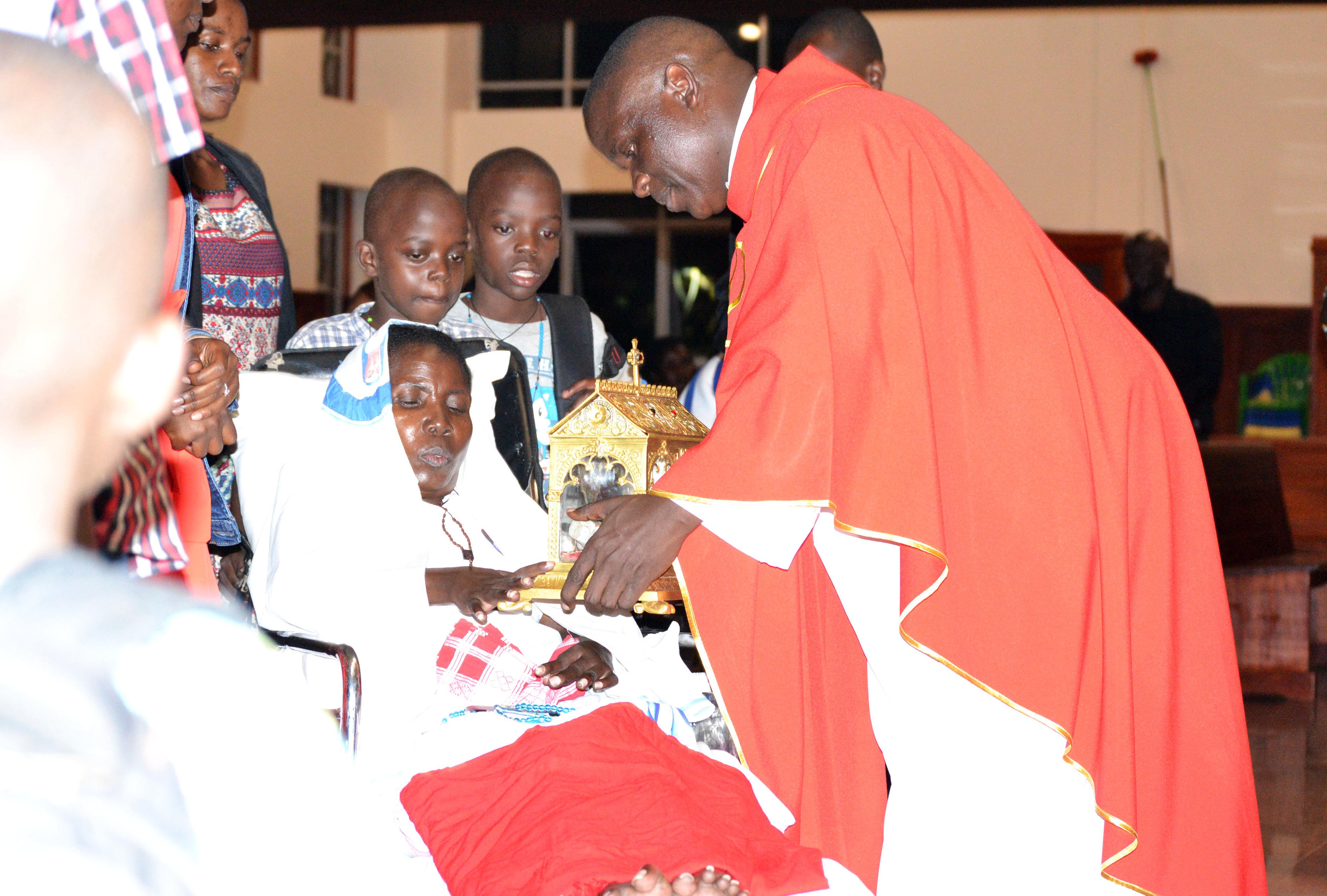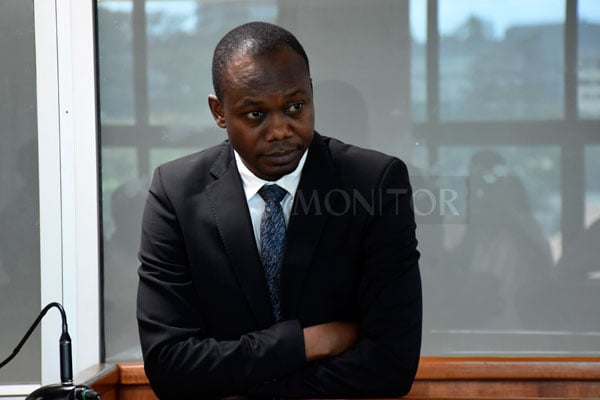Prime
Honouring martyrs through the relics

A congregant venerates the relics of St Charles Lwanga. Inset are first class relics. Photo | Sylivia Katushabe.
What you need to know:
- Faith. Christ the King Parish welcomed relics of Uganda Martyrs’ Charles Lwanga and Matia Mulumba recently.
On Saturday, August 3, the Christian faithful at Christ the King Parish in Kampala received the first-class relic of the Uganda Martyrs.
This gesture forms part of the celebrations organised by the Kampala Archdiocese to commemorate the 60th anniversary of the canonisation of the Uganda Martyrs.
A relic is a tangible object directly linked to a saint or Our Lord, such as a fragment of the saint’s body, an item used by the saint during their life, or an object that came into contact with the saint’s body.
The Rev Fr Joseph Mary Ssebunya, the youth coordinator, explained that in the Catholic faith, relics serve as a connection between believers and saints. They are categorised into first-class (part of the saint’s body), second-class (items used by the saint), and third-class (objects that touched the saint’s body).
Fr Ssebunya said the Catholic church was able to preserve the first-class relics of the two Uganda Martyrs, Charles Lwanga and Matia Mulumba because they were killed separately, therefore it was easy to identify them.
“However, the first-class relics of the other Uganda martyrs were not preserved because they were burnt collectively, making it challenging to separate the relics. Some relics were either consumed by wild animals or interred at the Anglican Museum,” the cleric said.
The first-class relics of the Uganda Martyrs, consisting of fragments of St Charles Lwanga and St Matia Mulumba’s bones, are enshrined in glass-like gold-coated containers. During the Uganda Martyrs Mass on June 3, priests prominently display these relics, fostering a tangible connection during the procession.
However, it is only the relics of Charles Lwanga that were brought to Christ the King Parish Kampala and were to stay there for three days to allow Christians to venerate and will later be taken to other parishes in Kampala Archdiocese until November this year when they hold the final celebrations.
The relics, Fr Ssebunya said, were obtained from the sites of their martyrdom by the White Fathers, and they play a significant role in the canonisation of the martyrs.
Fr Ssebunya asked the brethren to take advantage of the relics to venerate them and make their supplications through them.
“We are privileged to have these relics before us; let us pray to the Lord for guidance on how to benefit from them,” he said, adding that the Roman Catholic Church is not worshipping the dead Uganda martyrs like many people may think but rather venerating (honour them).
“We are not doing anything wrong, whatever we are doing we are just sharing the glory of God. Help our brothers and sisters to know the difference between veneration and adoration,” Fr Ssebunya said.
He explained the difference between veneration and adoration, emphasising that the Catholic Church does not worship the deceased Uganda martyrs but rather honours them through veneration.
Veneration is the act of showing reverence to the saint, who has been chosen and blessed by God, in the hope of receiving blessings in return.
“We are engaging in a practice that glorifies God and enriches our spiritual connection. Let us educate others on the distinction between veneration and adoration. You are venerating the saint who has been chosen and blessed by God that you may also get the blessings,” Fr Ssebunya said.
Quoting the Archbishop of Kampala Diocese Bishop Paul Ssemogerere, the cleric asked the Christians to interest themselves in knowing the story of the Uganda Martyrs, emulate them and also pray through the intercession of the Uganda martyrs.
The Martyrs were declared saints on October 18, 1964 thus marking 60 years of canonisation.
“This was a day that changed the dynamics of catholicity in the whole world when the pope declared that 22 Uganda martyrs, Africans, black martyrs are now saints in heaven,” the Rev Fr Ssebunya recounted.Faith. Christ the King Parish welcomed relics of Uganda Martyrs’ Charles Lwanga and Matia Mulumba recently.




